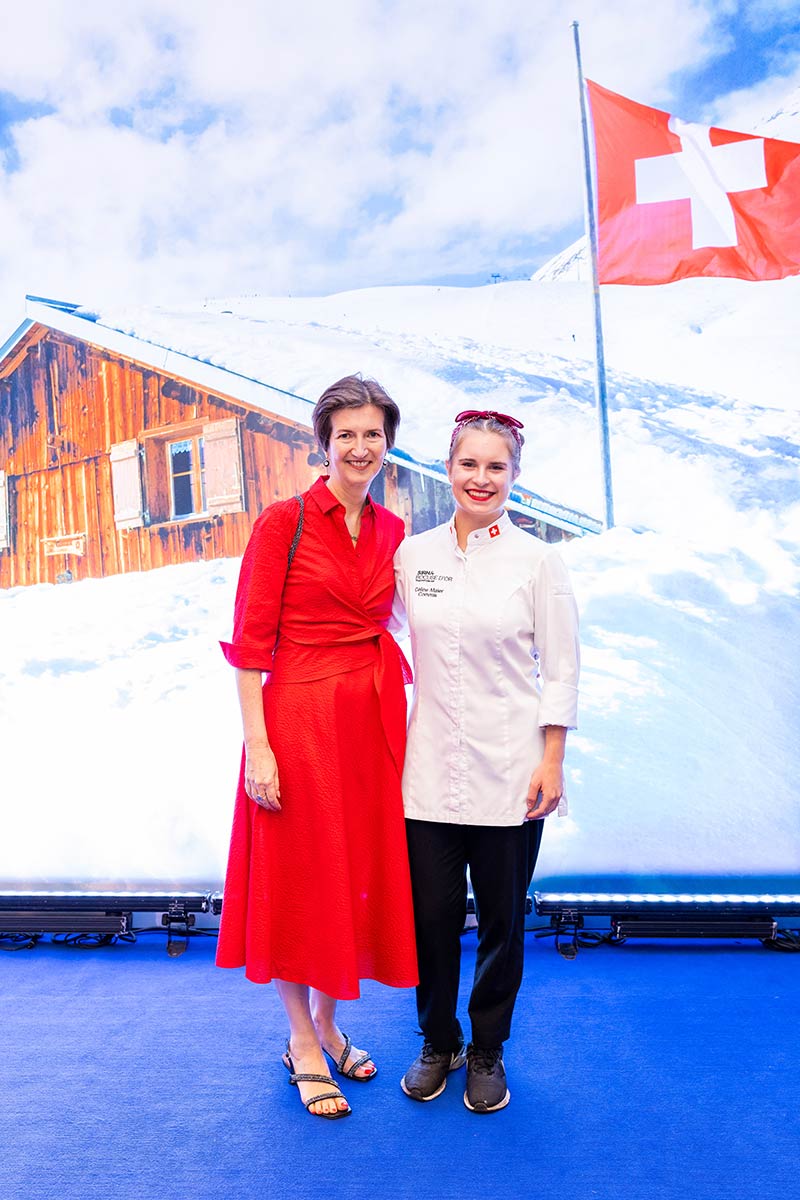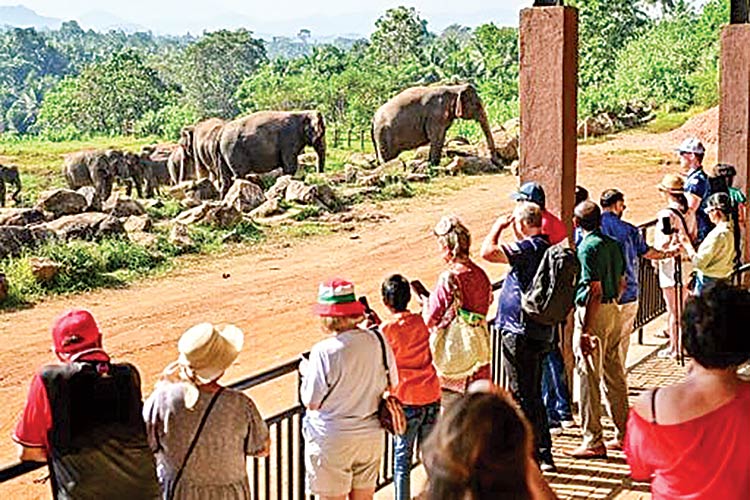Life style
Swiss Ambassador talks of challenges and aspirations
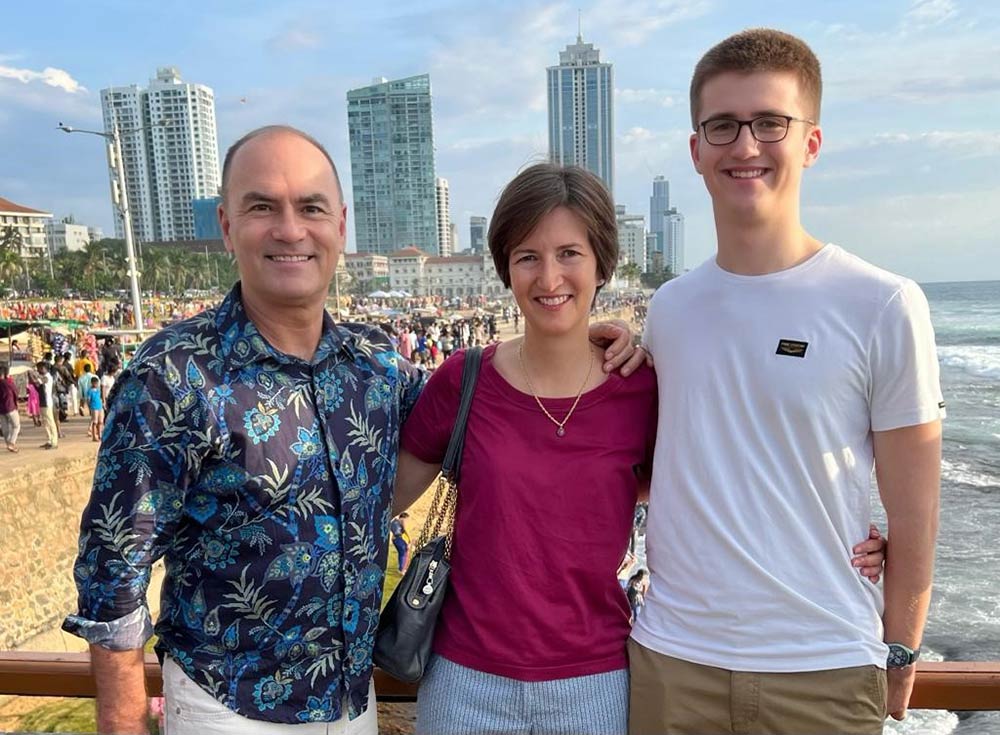
By Zanita Careem
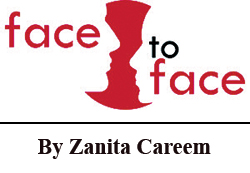 The Ambassador of Switzerland to Sri Lanka and Maldives, Siri Walt was born in 1967 in Bergen, Norway. She has studied at the University of Bern and at Lincoln College, Oxford, and has earned a PhD in Classics from the University of Bern in 1997. With a distinguished career spanning diverse diplomatic roles, Siri Walt brings a wealth of experience to her role in Sri Lanka.
The Ambassador of Switzerland to Sri Lanka and Maldives, Siri Walt was born in 1967 in Bergen, Norway. She has studied at the University of Bern and at Lincoln College, Oxford, and has earned a PhD in Classics from the University of Bern in 1997. With a distinguished career spanning diverse diplomatic roles, Siri Walt brings a wealth of experience to her role in Sri Lanka.
She also served as Ambassador of Switzerland to the Democratic Republic of Congo, the Republic of Congo and Gabon and from 2019-23 as Head of the Africa Division of the Federal Department of Foreign Affairs in Bern.
Siri Walt is married and has one son.
In an interview with the Sunday Island she shared her views on the naunces of diplomacy,the challenges and her aspirations for fostering stronger ties between Switzerland and Sri Lanka. Right from beginning, she revealed her deeply, human effectionate, optimistic and vibrant personality, she also spoke about shared values of democracy and human rights. Ambassador Dr. Siri has personal hopes dear to her heart, she loves to meet with people, not just from the fancy parties or within the diplomatic circle but to meet people from all corners of Sri Lanka. Her mission reflects a commitment to strengthening the bond between Sri Lanka and Switzerland, and to work closely to further develop this relationship with a shared vision for mutual prosperity.
Tell us about your professional journey? What inspired you to pursue a diplomatic journey?
My diplomatic career started almost 28 years ago, and I have never regretted it. Then, as now, learning about new cultures and countries and at the same time representing my own country and promoting bilateral relations is very gratifying. I also appreciate the diversity of my profession. I dealt for example with trade issues in South Korea, with development cooperation in the Democratic Republic of Congo (DRC) or with multilateral issues on the Organization for Security and Co-operation (OSCE) desk at headquarters. It is a privilege to learn from so many people, including political leaders, business representatives, civil society activists and artists, and to discuss issues of common interest.
Challenges you face as a woman diplomat in countries you served, including Sri Lanka?
When I entered the Swiss foreign service, women were still a minority and there very only very few women ambassadors. Since 2005 we have an association of Women Diplomats which promotes women in leadership positions and compatibility between work and family. I had the privilege to preside over this association for some time. It is important for colleagues to exchange experiences and to help each other. As a diplomat abroad I have never experienced any particular challenges as I am seen, at least on a professional level, as representing my country. But as women in general, we face of course still many challenges, in Switzerland, Sri Lanka or globally. So, if I can be a role model for young women by being a female diplomat, it makes me very happy. And it is encouraging that the Sri Lankan Foreign Ministry boasts many highly qualified women. The appointments of Dr. Harini Amarasuriya as PM and of Chief Justice Murdu Fernando are strong signals and will hopefully inspire many young Sri Lankan women to pursue their career goals.
Gender equally and women’s rights, How do you champion these initiatives in Sri Lanka?
Generally speaking, working to enhance gender equality and women’s rights is not only a task for women. They are the responsibility of the whole society, including men. It takes the effort of everyone to create a better and safe environment for people of all ages and gender.
At the embassy, gender issues are always a cross cutting theme when we plan our projects. We try to make sure that men and women are equally benefitting from our activities. And some projects target women specifically. When we plan meetings or organize panel discussions, we aim at gender equality among participants, although this can be quite challenging.
Your memorable experiences as a diplomat in Sri Lanka. How do you navigate these challenges as a woman diplomat?
Switzerland and Sri Lanka enjoy excellent bilateral relations in many fields. This enables my team and myself to engage on the political and economic level, but also through our cooperation in the field of peace promotion, reconciliation, human rights and migration. I particularly appreciated my trips to different regions of Sri Lanka where we met numerous men and women representing the diversity of the country. Their engagement in promoting prosperity and unity of Sri Lanka is remarkable. I do not think that these meetings are different because I am a woman, but I was particularly touched when I met the immensely strong women of the families of the disappeared in the North and the South. Their strength and resilience are truly impressive.
Your likes and dislikes in Sri Lanka. What are your memorable moments as a diplomat ?
Sri Lanka is a beautiful and amazing country in so many ways. Its cultures, landscapes, wildlife, but also the hospitality of its people and the food are truly special. Travelling in Sri Lanka is a great pleasure, and I am glad that many Swiss tourists enjoy this experience as well.
In our work on dealing with the past and peace promotion, we are of course also acknowledging the tragic legacy of the civil war and other violent episodes which are part of the country’s past. The courage of men and women dealing with these issues is very inspiring. It encourages us to work together with them towards a united and peaceful Sri Lanka.
From the magnitude of events around the world today, what do you think are the biggest challenges Switzerland will face in the next decade?
In today’s world we are indeed facing numerous challenges, not only for Switzerland, but for humanity in general. Major conflicts are raging in different parts of the world, causing incredible human suffering. Geopolitical tensions in general are increasing, making our world more insecure and volatile. Also, climate change, food insecurity and global health issues need common efforts on a global level. Like all countries Switzerland is trying to navigate this changing environment and contribute to solutions. We particularly focus on International Humanitarian Law (IHL) and humanitarian issues, the promotion of peace and a rules based global order in general.
And being located at the heart of Europe, Switzerland needs stable relations with our European neighbors with whom we share close cultural, economic and security ties.
During your time as Ambassador in Sri Lanka , is there a project close to your heart that you’d get it done?
At the moment, I hope that we can establish close ties with the new government which enable us to work together in areas of common interest to strengthen our economic ties, continue our successful migration partnership and contribute to a Sri Lanka which is united in its diversity.
Tell us about a time when your professional and family responsible came into conflict?
Combining professional and private life as a diplomat can indeed be challenging, for women as for men. Dual careers are hard to achieve and children are not always enthusiastic if they have to change schools and friends in regular intervals. I am lucky to have a family that was and is ready to make compromises and grow as much as possible from this fascinating but demanding life as a diplomatic family.
Have you ever been subject to harassment or discrimination and if so how do you handle it?
Discrimination is often subtle. Bosses might be unhappy if you are less flexible with a small child. Or people wonder if you really are tough enough for the job. What I regret sometimes is that men see their female colleagues as competitors, not as partners. We need men and women to create a diverse and successful working environment.
Can you share a formative experience that helped your leadership vision or style?
We can only achieve our goals working as a team and we should focus on the strengths of each member of the team. I think it is important to have inspiring mentors. I always enjoyed and learnt a lot from more experienced colleagues or superiors. I share this knowledge and experience with the colleagues around me.
What has been the biggest factor in your success? What was most difficult obstacle?
My parents have always encouraged me to pursue my dreams, my family has provided the support to continue my career and my friends have been there in times of need. I am also grateful for the coaching by female mentors who can help to navigate a working environment dominated by men.
Life style
Sri Lanka’s first elephant orphanage celebrates 50 years
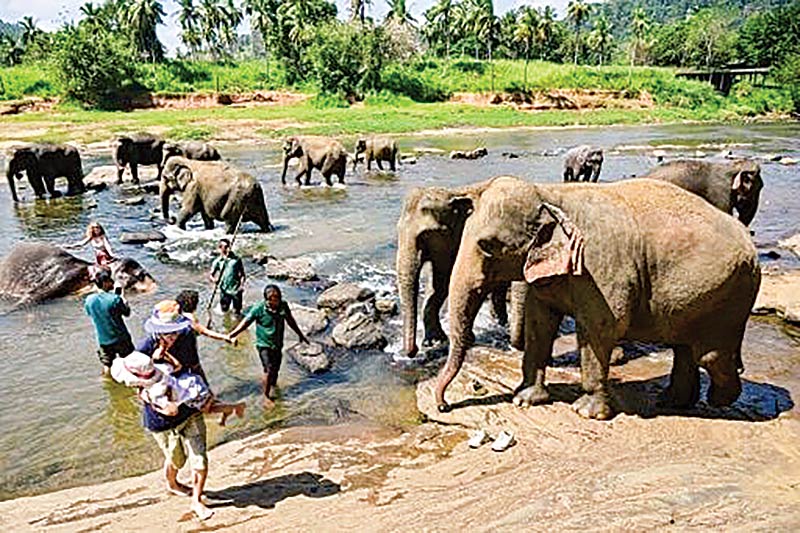
By Amal Jayasinghe
Pics by Ishara Kodikara
Sri Lanka’s main elephant orphanage marked its 50th anniversary on Sunday february 16 with a fruit feast for the 68 jumbos at the showpiece centre, reputedly the world’s first care home for destitute pachyderms. The Pinnawala Elephant Orphanage lavished pineapples, bananas, melons and cucumbers on its residents to celebrate the anniversary of their home, which is a major tourist attraction.
A few officials and tourists invited to the low-key celebration were served milk rice and traditional sweets while four generations of elephants born in captivity frolicked in the nearby Maha Oya river.
“The first birth at this orphanage was in 1984, and since then, there have been a total of 76,” said chief curator Sanjaya Ratnayake, as the elephants returned from their daily river bath.
“This has been a successful breeding programme, and today we have four generations of elephants here, with the youngest 18 months old and the oldest 70 years,” he told AFP.
The orphanage recorded its first twin birth in August 2021 — a rarity among Asian elephants — and both calves are doing well.
Two years before the orphanage was formally established as a government institution in February 1975, five orphaned elephants were cared for at a smaller facility in the southern resort town of Bentota.
“Since the orphanage was set up at Pinnawala in 1975, in a coconut grove, the animals have had more space to roam, with good weather and plenty of food available in the surrounding area,” Ratnayake said.
The home requires 14,500 kilos of coconut and palm tree leaves, along with other foliage, to satisfy the elephants’ voracious appetites.
It also buys tonnes of fruit and milk for the younger calves, who are adored by the foreign and local visitors to the orphanage, located about 90 kilometres (56 miles) east of the capital Colombo.
It is also a major revenue generator for the state, earning millions of dollars a year in entrance fees. Visitors can watch the elephants from a distance or get up close and help scrub them during bath times.
– Tragic toll –
The facility lacked running water and electricity at its inception but things improved as it gained international fame in subsequent years, said retired senior mahout K.G. Sumanabanda, 65.
“I was also fortunate to be present when we had the first birth in captivity,” Sumanabanda told AFP, visiting the home for the jubilee celebrations.
During his career spanning over three decades as a traditional elephant keeper, he trained more than 60 other mahouts and is still consulted by temples and individuals who own domesticated elephants.
Twenty years ago, Sri Lankan authorities opened another elephant home south of the island to care for orphaned, abandoned or injured elephants and later return them back to the wild.
While Pinnawala is seen by many as a success, Sri Lanka is also facing a major human-elephant conflict in areas bordering traditional wildlife sanctuaries.
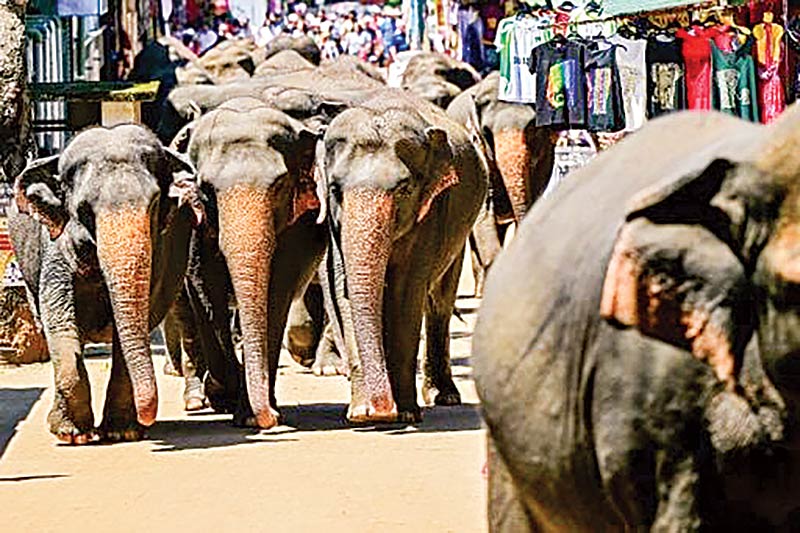
Elephants return to Sri Lanka’s Pinnawala Elephant Orphanage after taking their daily bath in a river
Deputy Minister of Environment Anton Jayakody told AFP on Sunday that 450 elephants and 150 people were killed in clashes in 2023, continuing an alarming trend of fatalities in the human-elephant conflict. The previous year saw 433 elephants and 145 people were killed.
Killing or harming elephants is a criminal offence in Sri Lanka, which has an estimated 7,000 wild elephants and where jumbos are considered a national treasure, partly due to their significance in Buddhist culture.
But the massacre continues as desperate farmers face the brunt of elephants raiding their crops and destroying livelihoods.
The minister was confident the new government could tackle the problem by preventing elephants from crossing into villages.
“We are planning to introduce multiple barriers—these may include electric fences, trenches, or other deterrents—to make it more difficult for wild elephants to stray into villages,” Jayakody told AFP.
Life style
Growing the Cultural Landscape with Suhanya Raffel
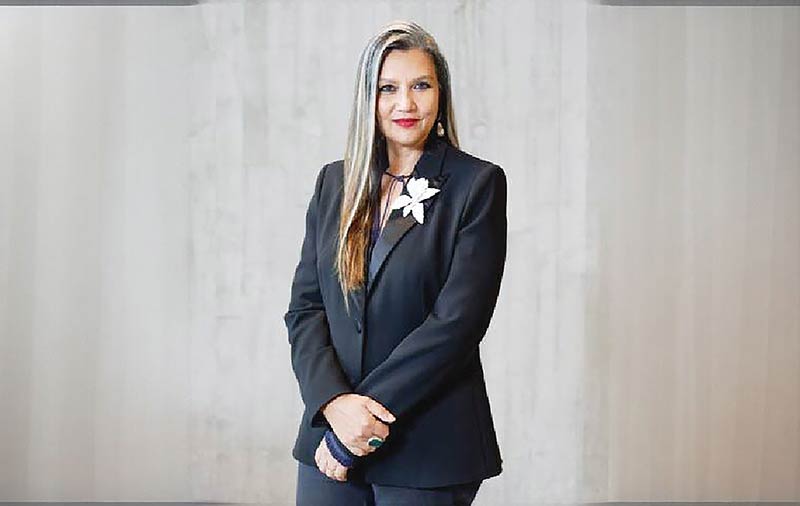
The Geoffrey Bawa Trust which was launched its 2025 is followed by Curatorial Conversations Series. Recently a presentation was made S by M+ Museum director and Geoffrey Bawa Trustee Suhanya Raffel. Speaking at the new Bawa Space on Horton Place, Raffel drew on extensive experience in the museum and art world to present insights and programming from the M+ Museum in Hong Kong. M+ is Asia’s first global museum of contemporary visual culture and presents itself as an intersection of visual art, design and architecture, and the moving image.
The evening presented an opportunity to hear from a leading expert in the museum field and discuss Sri Lanka’s present and future cultural landscape. It also highlighted the role of the Geoffrey Bawa Trust in conserving the legacy of the architect and his collaborators, and promoting contemporary art and design. “There are amazing artists, great designers, and reactive minds in Sri Lanka and the region,” Raffel said at a press event earlier in the afternoon. “There is opportunity in the aspiration to establish things, artists doing very important work, and the energy of individuals to try to make a difference.”
In part, this opportunity stems from the lack of established large-scale infrastructure to conserve Sri Lanka’s modern cultural legacy and support emerging artists. While there is the scope to shape the domestic art world and build institutions reflective of the local cultural community, there are also limitations and challenges in realising this potential.
Raffel spoke extensively about the need to build curatorial skills and knowledge and nurture cultural leaders in the region. Recognising this need, the Geoffrey Bawa Trust maintains public programmes, including exhibitions, residencies, tours, and lectures, to broaden public discourse and knowledge on the built environment and the arts in Sri Lanka and overseas. To fulfil curatorial needs and encourage growth in artistic and cultural institutions such as museums, the Trust employs a dedicated curatorial team and runs a robust internship and training programme. It is hoped that building this skill base will encourage others to explore similar career opportunities and support art, design, and architecture in the region. Sri Lankan visual arts over the past century have enjoyed wide international acclaim. “Sri Lanka is known globally for its creative work,” says Raffel, “it is culturally very strong.”
Geoffrey Bawa is a great example of this global influence. During his lifetime, the architect was very well-known in Sri Lanka and among contemporaries around the world. His structural, landscape, and furniture designs continue to guide and inspire. “It is very important for makers to be seen with their international peers,” Raffel explains. This cultural engagement on regional and international platforms is paramount for ensuring open dialogue and exchange. This means supporting collaborations, encouraging foreign markers to come to Sri Lanka, and exhibiting Sri Lankan work internationally.
The Trust is working to support this global dialogue by hosting installations by artists and makers from Sri Lanka and abroad, as was done in celebration of Geoffrey Bawa’s 100th birthday and again throughout the To Lunuganga programme from 2023-2024. The Trust took Geoffrey Bawa’s work to the world in 2024 with the travelling It is Essential to be There exhibition in Sri Lanka, India, and the United States.
The Trust is proud to be part of major professional international forums such as the International Confederation of Architectural Museums and the Committee for Modern and Contemporary Art Museums, both affiliated with the International Council of Museums. These platforms are vital for global knowledge sharing and advocacy. “We want more of these types of collaborations to happen both with the Geoffrey Bawa Trust, but also other arts and cultural institutions in Sri Lanka,” says Raffel.
In furthering this mission, the Trust is excited to present the new Bawa Space as the organisation’s public face and offer opportunities for the public to engage with the Trust’s work. Located in a recently restored Bawa-designed house from 1959, the Bawa Space doubles as the Geoffrey Bawa Trust headquarters and archives, as well as a new gallery and space for talks and events that will continue year-round.
Life style
Colombo Fashion Week 19-22 February: Two decades of creating the Fashion Eco-system in Sri Lanka

This year CFW will showcase a selection of Emerging Designers alongside established Sri Lankan designers. Adding international flavour will be well known designers from India Suket Dhir, Urvashi Kaur and Zaheer Abbas from Pakistan.
Colombo Fashion Week (CFW), presented by Mastercard, enters its 22nd year in 2025 with its Summer edition, marking another milestone in its journey as one of the four fashion weeks in Asia that have surpassed 2o years.Emerging Designer initiative of CFW this time remains one of its main pillars, providing an entry point for the next generation to pursue design-based entrepreneurship. This in line with the introduction of the Craft Fashion Fund this year is a testament to this commitment. The Craft Fashion Fund will select two winners, one who incorporates batik and another who utilizes crafts other than batik. This initiative passed 20 years.
Over the years, CFW has proven to be the backbone of Sri Lanka’s fashion design industry—its only voice—while creating a fashion ecosystem that provides support to new emerging designers entering the industry. Informally known as South Asian Fashion Week, it serves as a regional hub due to its geopolitical advantage. It is also one of the most significant fashion weeks in South Asia, having played a crucial role in revitalizing the country’s fashion design industry.
This year, Colombo Fashion Week has also expanded its international footprint since joining as a founding member of the newly created BRICS International Fashion Federation. This aligns with CFW’s ongoing mission to bridge diverse fashion markets and foster creative dialogue across continents. As part of this federation, CFW has signed a designer exchange program with BRICS, where a designer from a BRICS country will showcase their work at CFW, and a Sri Lankan designer will present their collection there. CFW continues to play a pivotal role in presenting Sri Lanka through the lenses of arts, culture, and sustainability, further contributing to destination marketing on a global scale.

The Head Table From L to R: Harsha Maduranga, GM – Vision Care, Yatila Wijemanne, Chairman – Juniper, Dr. Vibash Wijeratne, Dirand CEO – Ninewells, Shamara Silva, Mrkt & Media Dir – Unilever, Ruwan Perera, CEO – NDB Wealth, Kamal Munasinghe, Area VP and GM – Cinnamon Grand, Ajai Vir Singh, Founder – CFW, Sandun Hapugoda, Country Mgr – Mastercard, Samrat Datta, GM – Taj Samudra, Bernhard Stefan, MD – Nestlé Lanka, Ramani Fernando, Founder – RF Salons, Arjuna Kumarasinghe, MD -Cargills Food & Beverages
Ajai Vir Singh, Founder, Colombo Fashion Week stated: “Colombo Fashion Week has consistently demonstrated its commitment to developing Sri Lanka’s fashion industry through strategic international partnerships and innovative platforms. Our growing international recognition and expanding designer network reflects vital role this platform plays in positioning Sri Lanka through its creative industries.”
Mastercard, as the presenting partner, continues to champion CFW’s vision of sustainable and inclusive fashion innovation, focusing on digitizing sustainability initiatives and supporting small and medium fashion enterprises.
Sandun Hapugoda, Country Manager, Sri Lanka & Maldives, highlights: “Mastercard is thrilled to partner with Colombo Fashion Week once again, celebrating the incredible talent and creativity within the fashion industry. This partnership aligns perfectly with our commitment to support local artistry. Together, we aim to inspire new possibilities, connect communities, support sustainable fashion initiatives, and elevate the local fashion industry to a global audience, delivering a truly priceless experience. We also anticipate CFW to be a great support to boost the Sri Lanka tourism industry as well.”
The Craft Fashion Fund encourages young designers to engage with and incorporate Sri Lankan crafts into their collections. This approach has been highly successful for designers in other South Asian countries, where traditional crafts have helped establish a unique identity for them. Sri Lankan fashion has its best opportunity to develop a distinct identity when designers integrate local crafts into their work. The developing of this identity has been professed by CFW among the design fraternity, so they are able to create market demand beyond Sri Lanka.
The Emerging Designer initiative of CFW remains one of its main pillars, providing an entry point for the next generation to pursue design-based entrepreneurship. This in line with the introduction of the Craft Fashion Fund this year is a testament to this commitment. The Craft Fashion Fund will select two winners, one who incorporates batik and another who utilizes crafts other than batik. This initiative will support two exceptional designers, ensuring the preservation and evolution of Sri Lanka’s rich artistic heritage. This season, fifteen emerging designers will present their collections, further demonstrating CFW’s dedication to fostering the next generation of fashion talent.
Fazeena Majeed Rajabdeen, Director & CEO, Colombo Fashion Week further added: “Colombo Fashion Week, with its focus on nurturing new talent and emerging designers, has played a pivotal role in reviving and propelling Sri Lanka’s fashion industry. We are proud to present 15 emerging designers this year and to have Sharmila Ruberu mentoring these designers on collection planning. This, along with the Craft Fashion Fund, reiterates our commitment to further the thriving ecosystem we have built, embracing sustainability and empowering young talent.”
Colombo Fashion Week Summer 2025 is set to transform Colombo into an immersive fashion destination by showcasing designers across three of the city’s most prestigious locations. The key partners of Destination Colombo includes Shangri-La, Taj Samudra, and Cinnamon Grand. The shows will feature an impressive roster of international and local talent, including designers from India, Italy and Russia. Renowned creators such as Rimzim Dadu,
Cettina Bucca, Suneet Varma and JJ Valaya, will present alongside celebrated Sri Lankan designers including Fouzul Hameed, Sonali Dharmawardena, Asanka De Mel, Aslam Hussein, Kamil Hewawitharana, Dimuthu Sahabandu, Indi Yapa Abeywardena and Charini Suriyage.
Colombo Fashion Week 2025 is proudly supported by Mastercard, presenting partner along with Shangri-La, Cinnamon Grand, Taj Samudra, NDB Wealth, Yatra, Ninewells Aesthetic Centre, Tresemme, Vaseline, Juniper, Chupa Chups, Nestle-Nescafe, Vision Care, Knuckles, Hameedia, Ramani Fernando, Wijeya Newspapers, Hard Talk, Acorn and Emerging Media.
-
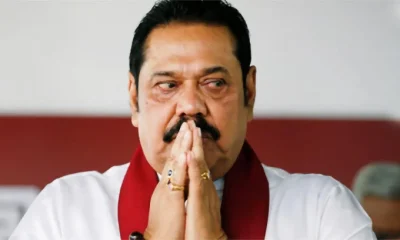
 Features6 days ago
Features6 days agoDon’t betray baiyas who voted you into power for lack of better alternative: a helpful warning to NPP – II
-

 News4 days ago
News4 days agoCommercial High Court orders AASSL to pay Rs 176 mn for unilateral termination of contract
-
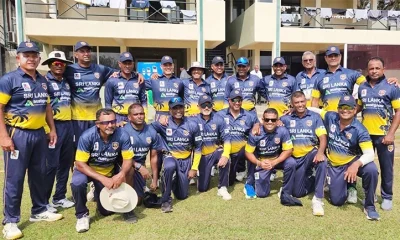
 Sports3 days ago
Sports3 days agoSri Lanka face Australia in Masters World Cup semi-final today
-
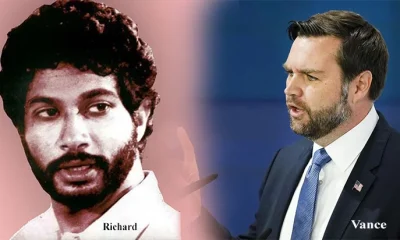
 Features6 days ago
Features6 days agoTwo films and comments
-
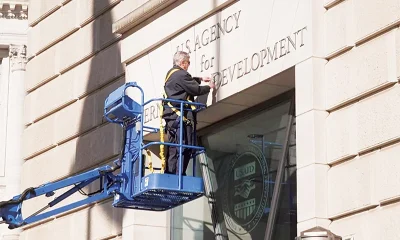
 Features5 days ago
Features5 days agoUSAID and NGOS under siege
-

 Features5 days ago
Features5 days agoDoing it in the Philippines…
-

 News3 days ago
News3 days agoCourtroom shooting: Police admit serious security lapses
-
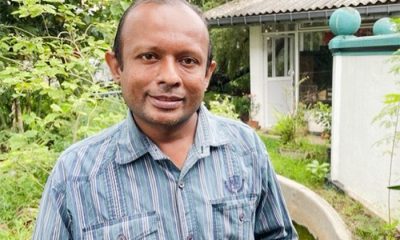
 News4 days ago
News4 days agoFSP lambasts Budget as extension of IMF austerity agenda at the expense of people


